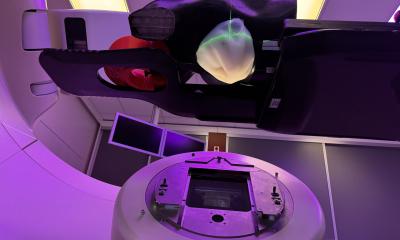Intra-operative radiotherapy advances
Intra-operative radiotherapy (IORT) using the Intrabeam system from Carl Zeiss has been confirmed as a new alternative to the current approach to radiotherapy for breast cancer, by scientists and physicians at a symposium on IORT technological developments held in Germany.

‘The targeted intra-operative irradiation of the affected tissue in the tumour bed with Intrabeam protects the surrounding healthy tissue, is less aggressive and therefore offers a clear treatment benefit to patients,’ the manufacturer reports, adding that the time required for the therapy is also reduced.
‘The intra-operative boost with Intrabeam and the subsequent shorter external radiotherapy have been backed up by solid clinical data,’ said Professor Frederik Wenz, Director of the University Hospital for Radiotherapy and Radio-oncology in Mannheim. ‘This application has therefore been incorporated as an option in the Practical Guidelines of the German Radio-oncology Society (DEGRO).’ Thanks to this, and the uncomplicated operation of the system, IORT with the Intrabeam is not only utilised in universities and research institutes, but is also large and mid-sized breast centres are increasingly using the method, the firm adds.
Costs: ‘The optimisation of the treatment method is also rated very positively by the cost-bearers,’ said Dr Kay Friedrichs, speaking of the implementation of IORT at the Hamburg Breast Centre.
Dr Boris Rapp, Director of the Sanakinikum healthcare centre, in Hof, added: ‘The inclusion of intra-operative radiotherapy in the German healthcare reimbursement system should be seen as a very positive development and will also have a favourable effect on the increased use of this therapy option.’
Asked about the future of intra-operative radiotherapy, Professor Manfred Kaufmann, Director of the University Gynaecological Hospital in Frankfurt, compared it to the development in surgical techniques in recent years: ‘There has been an obvious trend away from radical breast amputation to less invasive, breast-conserving therapy. In radiotherapy there will be a similar transition from today’s largely standardised treatment regimen to risk-adapted therapy that focuses more sharply on the patient’s personal risk factors.’
01.07.2009











